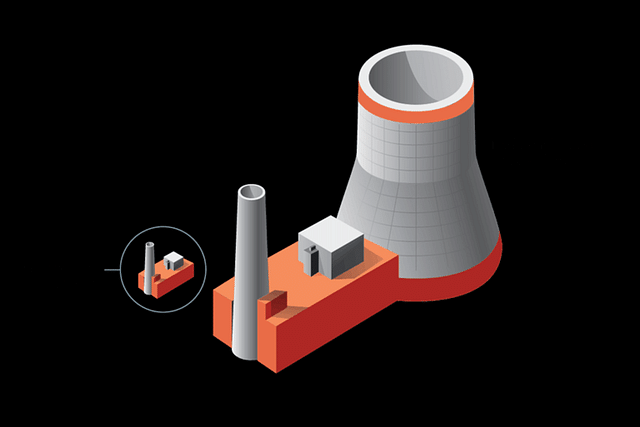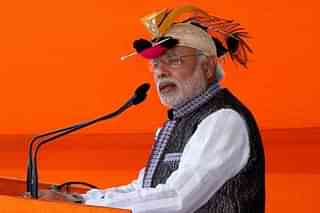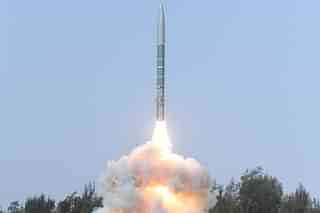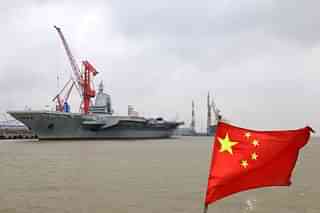World
Big Players With Small Reactors Are Battling For Nuclear Energy Supremacy
Amit Mishra
Mar 20, 2024, 03:07 PM | Updated 03:07 PM IST
Save & read from anywhere!
Bookmark stories for easy access on any device or the Swarajya app.

The global nuclear energy race is heating up, and this time United States (US) is at the front seat.
TerraPower, a company founded by Bill Gates, says it plans to start building the first of a new generation of nuclear power plants in the US in June this year. This move puts them in direct competition with Russian and Chinese contenders, all striving to develop and export lower-cost reactors.
Seattle-based TerraPower thus joins the list of a dozen other companies vying to develop a new generation of smaller, more efficient reactors, a notable inflection point in the nuclear industry’s effort to remake itself as a way to address climate change.
They are often called small modular reactors (SMRs) and typically have a power capacity of 300 MW or less, which is roughly one-third of that of standard plants.
SMRs are more cost-effective to construct, making them an attractive option in the market compared to the bespoke, large-scale power plants known for exceeding budgets and missing deadlines.
TerraPower's Natrium reactor, developed in collaboration with GE Hitachi Nuclear Energy, could be built for about half the expense of traditional water-cooled reactors, which have been the mainstay of the nuclear energy sector since the mid-20th century.
The big problem: The US has not managed to get an SMR working commercially on land. Compare this with the state-controlled rivals in Russia and China, who have already made significant strides in this arena.
Russia, known for its expertise in traditional reactor technology, has the 35 MW Akademik Lomonosov plant, a floating nuclear power station that provides electricity to the port town of Pevek.
Moreover, Kremlin holds another advantage: its state-owned nuclear company fulfills nearly all global demand for SMR fuel, specifically high-assay low-enriched Uranium (HALEU).
On the other hand, China is the only country to have an SMR in operation on land, a reactor in Shidao Bay, Shandong, that was grid-connected in December 2021.
Two more SMRs are under construction — a 30 MW unit in Argentina and a 300 MW plant in Russia by 2026-27.
To put this in perspective, there is a definitely a huge race on to scale up the market for SMR reactor technology and building the associated fuel enrichment capacity.
The commitment to the SMR pursuit is evident in the allocation of $72 million by the US government to its international SMR programme, known as FIRST.
The Foundational Infrastructure for Responsible Use of Small Modular Reactor Technology (FIRST) Programme is a multiagency US government initiative that provides countries with a whole suite of tools — from workshops to engineering and feasibility studies — to provide them with everything they need to buy an SMR fleet made in America.
On the other hand, both China and Russia offer a relatively less transparent but “very attractive" financing and other kinds of incentives to expand their nuclear industry abroad.
Globally, the nuclear energy has made a big comeback, with the International Energy Agency forecasting that global nuclear power generation will reach a record high by 2025.
This is why nuclear energy is undergoing a major strategic shift, fueled by significant investments, marking the start of a fierce competition for supremacy in global energy export markets.
For India, the small reactors represents the next global leadership slot, serving as a means to fulfill its commitment to clean energy transition while leveraging SMRs as a technology-driven component of its foreign policy strategy.
The centre is already considering partnerships with other nations and pursuing indigenous development of SMRs. Additionally, it is reviewing provisions of the Atomic Energy Act of 1962 to enable private sector and start-up participation.
With strategic manoeuvring, New Delhi has the potential to pitch itself as an alternative to US, Russia and China in this niche field, especially in the global south.
Save & read from anywhere!
Bookmark stories for easy access on any device or the Swarajya app.
Introducing ElectionsHQ + 50 Ground Reports Project
The 2024 elections might seem easy to guess, but there are some important questions that shouldn't be missed.
Do freebies still sway voters? Do people prioritise infrastructure when voting? How will Punjab vote?
The answers to these questions provide great insights into where we, as a country, are headed in the years to come.
Swarajya is starting a project with an aim to do 50 solid ground stories and a smart commentary service on WhatsApp, a one-of-a-kind. We'd love your support during this election season.
Click below to contribute.





